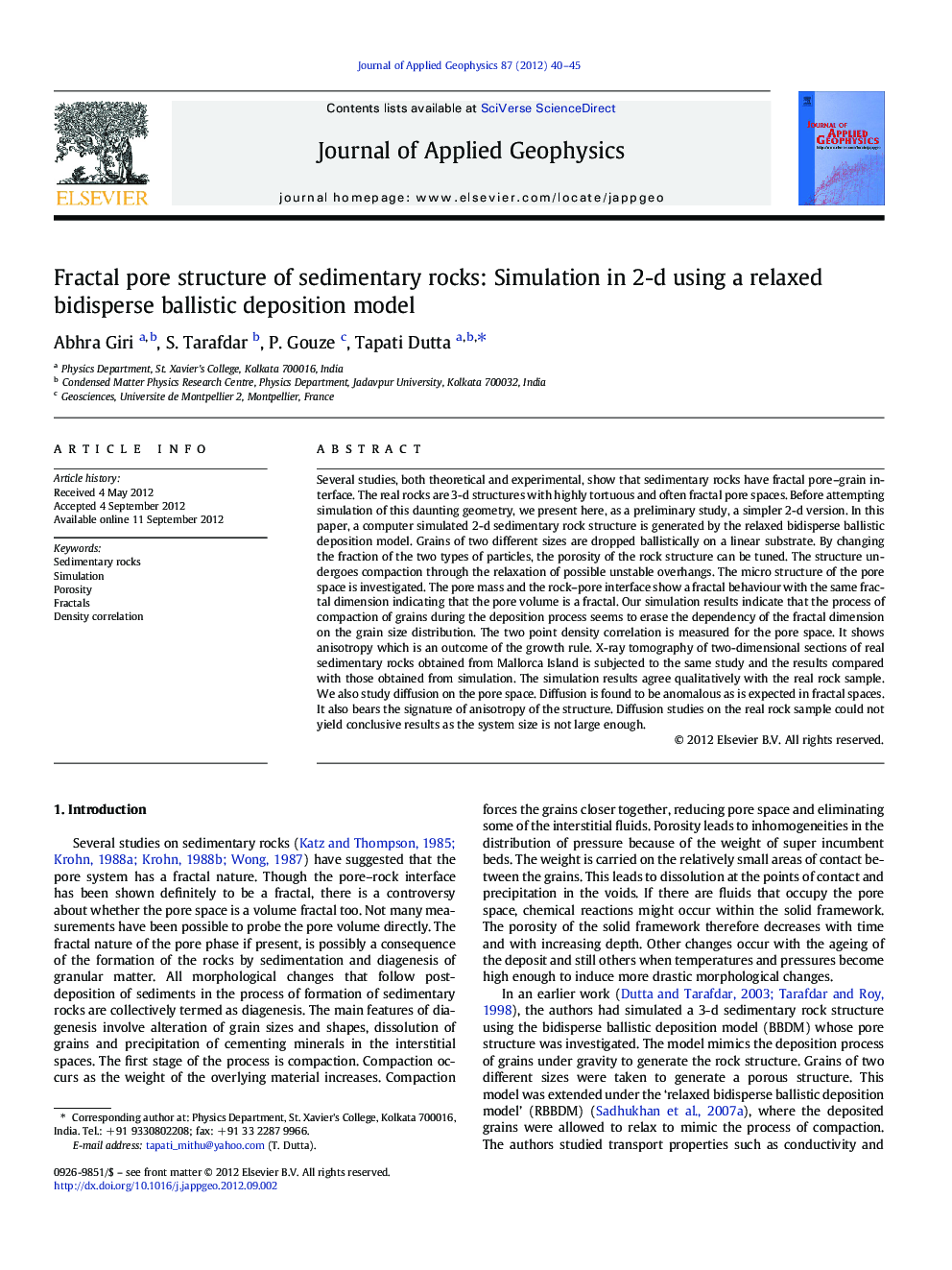| Article ID | Journal | Published Year | Pages | File Type |
|---|---|---|---|---|
| 4740348 | Journal of Applied Geophysics | 2012 | 6 Pages |
Several studies, both theoretical and experimental, show that sedimentary rocks have fractal pore–grain interface. The real rocks are 3-d structures with highly tortuous and often fractal pore spaces. Before attempting simulation of this daunting geometry, we present here, as a preliminary study, a simpler 2-d version. In this paper, a computer simulated 2-d sedimentary rock structure is generated by the relaxed bidisperse ballistic deposition model. Grains of two different sizes are dropped ballistically on a linear substrate. By changing the fraction of the two types of particles, the porosity of the rock structure can be tuned. The structure undergoes compaction through the relaxation of possible unstable overhangs. The micro structure of the pore space is investigated. The pore mass and the rock–pore interface show a fractal behaviour with the same fractal dimension indicating that the pore volume is a fractal. Our simulation results indicate that the process of compaction of grains during the deposition process seems to erase the dependency of the fractal dimension on the grain size distribution. The two point density correlation is measured for the pore space. It shows anisotropy which is an outcome of the growth rule. X-ray tomography of two-dimensional sections of real sedimentary rocks obtained from Mallorca Island is subjected to the same study and the results compared with those obtained from simulation. The simulation results agree qualitatively with the real rock sample. We also study diffusion on the pore space. Diffusion is found to be anomalous as is expected in fractal spaces. It also bears the signature of anisotropy of the structure. Diffusion studies on the real rock sample could not yield conclusive results as the system size is not large enough.
► 2-d simulation of sedimentary rock with desired porosity. ► Behaves as a volume fractal with interface dimension equal to void mass dimension. ► 2-point density correlation of pores shows realistic nature. ► Diffusion through pores is anomalous showing fractal signature. ► Comparative study with real rock sections shows similar behaviour.
